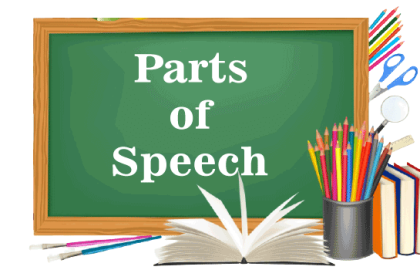Understanding parts of speech is fundamental to mastering the English language. Each word in a sentence has a specific role, and knowing these roles helps in constructing
grammatically correct sentences. There are eight primary parts of speech in English grammar: nouns, pronouns, verbs, adjectives, adverbs, prepositions, conjunctions, and interjections.

Nouns
Nouns are words that name people, places, things, or ideas. They are often the subject of a sentence. Examples include “cat,” “London,” “happiness,” and “car.” Nouns can be classified further into proper nouns, which name specific entities (like “John” or “Paris“), and common nouns, which refer to general items or concepts (like “city” or “dog“).
Pronouns
Pronouns replace nouns to avoid repetition and simplify sentences. Words like “he,” “she,” “it,” “they,” “who,” and “whom” are pronouns. For instance, instead of saying “Maria saw Maria’s friend,” we say, “Maria saw her friend.” Pronouns can be personal (I, you, he), possessive (my, your, his), reflexive (myself, yourself), and relative (who, which).
Verbs
Verbs are action words that describe what the subject of the sentence is doing. Examples include “run,” “jump,” “think,” and “exist.” Verbs also indicate the time of the action (past, present, future) through their tense. They can be divided into main verbs, which show the main action, and auxiliary verbs (helping verbs), such as “be,” “do,” and “have,” which assist the main verb.
Adjectives
Adjectives describe or modify nouns and pronouns, adding detail and specificity. They answer questions like “which one?” “what kind?” and “how many?” Examples are “blue,” “quick,” “tall,” and “several.” For instance, in “The tall building,” “tall” is an adjective describing “building.” Comparative adjectives (e.g., taller, more beautiful) compare two things, while superlative adjectives (e.g., tallest, most beautiful) compare three or more.
Adverbs
Adverbs modify verbs, adjectives, or other adverbs. They often answer questions such as “how?” “when?” “where?” and “to what extent?” Examples include “quickly,” “yesterday,” “there,” and “very.” In “She sings beautifully,” “beautifully” is an adverb modifying the verb “sings.” Adverbs can sometimes be formed by adding “-ly” to adjectives, though not always (e.g., fast, well).
Prepositions
Prepositions show the relationship between a noun (or pronoun) and another word in the sentence. They often indicate direction, location, time, or method. Common prepositions include “in,” “on,” “at,” “by,” “with,” and “under.” For example, in “The book is on the table,” “on” shows the relationship between “book” and “table.”
Conjunctions
Conjunctions connect words, phrases, or clauses. They help in forming complex sentences and improve the flow of writing. There are three main types of conjunctions: coordinating (e.g., “and,” “but,” “or“), subordinating (e.g., “because,” “although,” “if“), and correlative (e.g., “either…or,” “neither…nor“). For example, “She likes coffee and tea” uses “and” to connect two nouns.
Interjections
Interjections are words or phrases that express strong emotion or sudden bursts of feeling. They are often followed by an exclamation mark. Examples include “wow,” “ouch,” “hey,” and “oh.” Interjections can stand alone or be incorporated into sentences. For instance, “Wow! That’s amazing!” or “Hey, what are you doing?”
Conclusion
The parts of speech are the building blocks of English grammar. By understanding and correctly using nouns, pronouns, verbs, adjectives, adverbs, prepositions, conjunctions, and interjections, one can improve both written and spoken communication. These categories help us organize our thoughts and convey meaning clearly and effectively. Recognizing and using the correct parts of speech is essential for language proficiency and clarity in expression.
Article By – @Jyothi_esl
Decoding ChatGPT: The Language Wizard
4 (1)







 If you want to use your preferred UPI app, our UPI ID is raj0nly@UPI (you can also scan the QR Code below to make a payment to this ID.
If you want to use your preferred UPI app, our UPI ID is raj0nly@UPI (you can also scan the QR Code below to make a payment to this ID.






